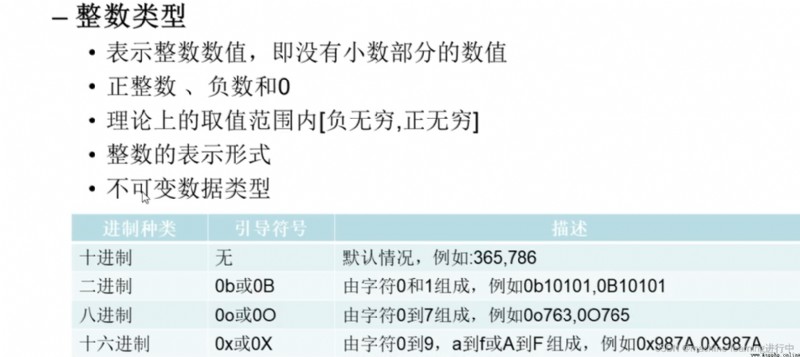
特別注意:
①Integer type is immutable data type;②Note the leading symbols for each base,Leading symbols are used in assignments
③二進制不能出現2,八進制不能出現8
num1=987 #默認十進制
num2=0b1010101 #使用二進制表示整數
num3=0o765 #使用八進制表示整數,八進制不能出現8
num4=0x87ABF #使用十六進制表示整數 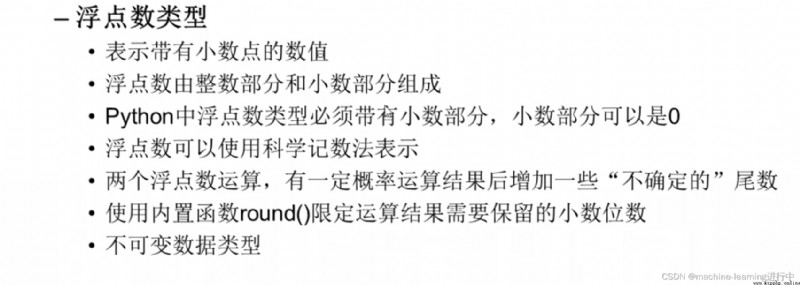
注意:
①浮點數必須帶有小數部分,There is no zero-padded;②Operations on two floating-point numbers result in an indeterminate mantissa;③函數round()The number of reserved bits can be limited④Immutable data type when floating point type
round(number,位數),對number保留位數,are separated by commas.
print(0.1+0.2) #輸出結果時0.30000000000000004,Has an indeterminate mantissa,Because the computer operates on binary numbers
print(round(0.1+0.2,1))#輸出結果是0.3,保留一位小數
復數的應用:Complex numbers are very common in scientific computing

Single-line strings are enclosed in single or double quotes,Multiline strings are enclosed in triple quotes.
city="北京"
address="其他"
info="""聯系人:王某
電話:1233466
地址:不詳"""
print(city)
print(address)
print(info) #Output a multi-line string in triple quotes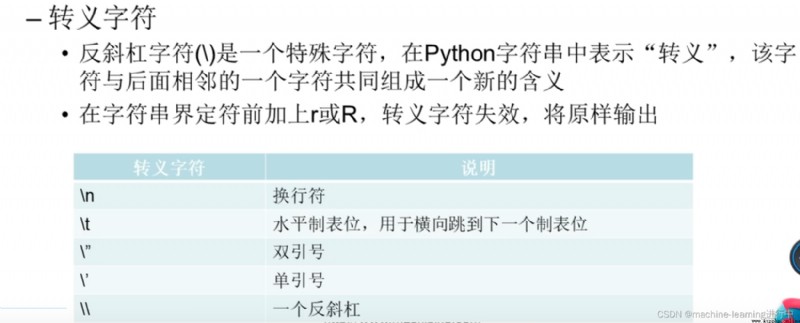
print("大家\n歡迎你") #遇到\n即換行
print("大家\t歡迎你") #\tis the tab account8個空格位置,Dissatisfied with the front8Spaces are filled with spaces;若滿8個空格位置,則重新開辟8個空格位置
print("他說:\"要吃飯\"") #Output double quotes directly in the sentence
print(r"大\n家\n歡\n迎\n你") #direct output\n家\n歡\n迎\n你,Escape characters are invalid and output as is字符串界定符That is, the double or single quotation marks of the string
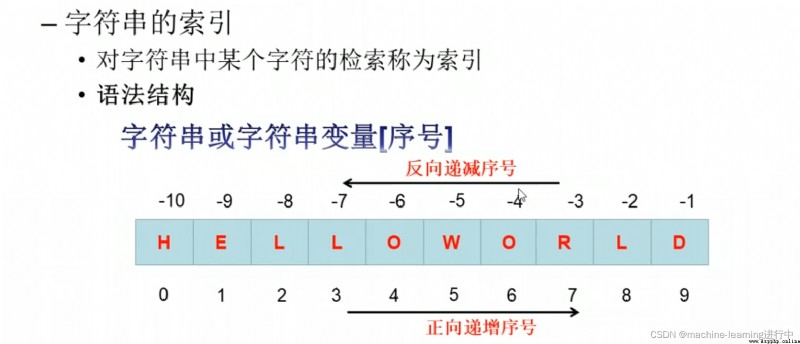
正向索引:序號從0開始
反向索引:serial number from the end-1開始
s=helloworld
print(s[0],s[-10])
#The above output is the sameh
print("You are welcome"[4])
print("You are welcome"[-1])
#輸出結果相同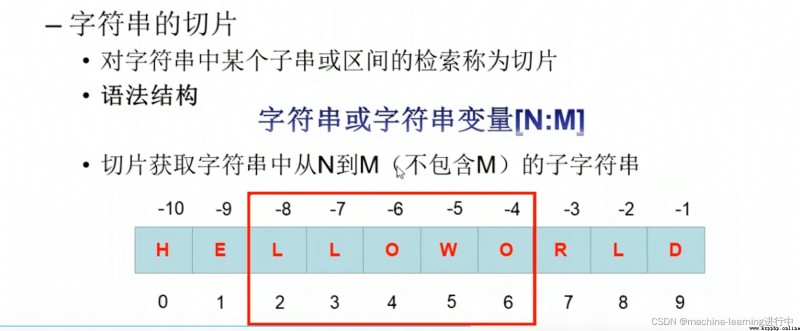
注意:①若不指定N,則N默認從0開始
②若不指定M,則MCut to the end of the string by default
s="helloworld"
print(s[2:7])
print(s[-8:-3])
#The above output is the same,都為llowo
print(s[:5]) #輸出為hello
print(s[5:]) #輸出為world
x="2022"
y="北京冬奧會"
print(x+y) #拼接字符串
print(10*x) #x的內容輸出10次
print(x*10) #x的內容輸出10次
print("北京" in y) #輸出為True 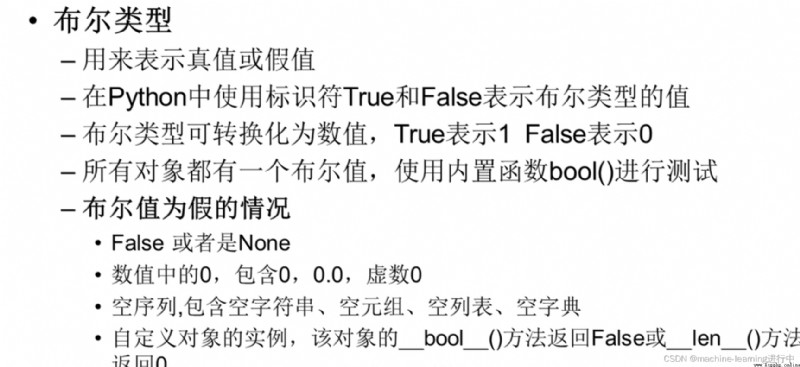
x=True
print(x) #輸出為True
print(type(x)) #輸出為<class:bool>
print(True+10) #輸出11
print(False+10) #輸出10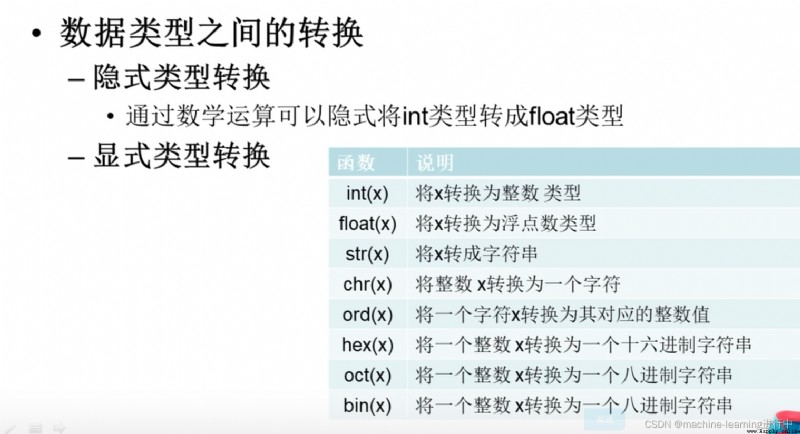
float類型轉換為int類型,只保留整數部分,不會四捨五入,無論正數負數
改正:bin(x)將一個整數轉換為二進制字符串
#將str類型轉為int類型
print(int("100")+int("200")) #輸出300
#將str類型轉為float類型
print(float("3.14")) #輸出float類型3.14
#將str類型轉為intType error
print(int("18a")) #報錯 value error
print(int("3.14")) #報錯 value error
#將str轉為float報錯情況
print(float("18a.987")) #value errorprint("十進制轉成十六進制:"+hex(26472))
print("十進制轉成八進制:"+oct(26472))
print("十進制轉成二進制:"+bin(26472))
#All of the above are converted to strings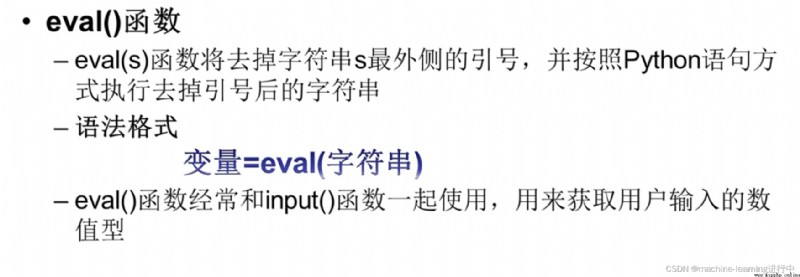
s="3.14+3"
print(s,type(s)) #輸出:3.14+3 <class:str>
x=eval(s)
print(x,type(x)) 輸出:6.1400001 <class:float>
#eval()函數去掉s的雙引號,變成了表達式,And the calculation result is float類型
#eval()常與input()配合使用,The numeric type used to get user input
age=eval(input("你的年齡:")) #該步將str轉為int
print(age,type(age))
#使用eval()報錯的情況
print(eval("hello")) #報錯nameerror:hello is not defined
#因為eval()after removing the double quotes,becomes an identifierhello,and the identifier is preceded by a declaration